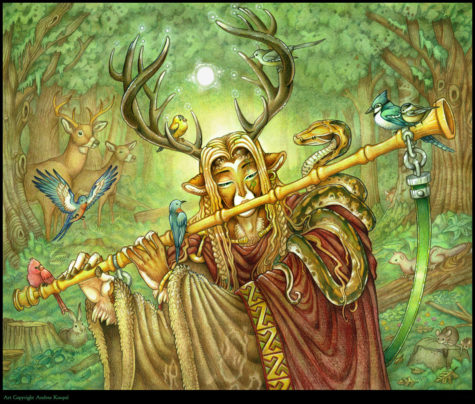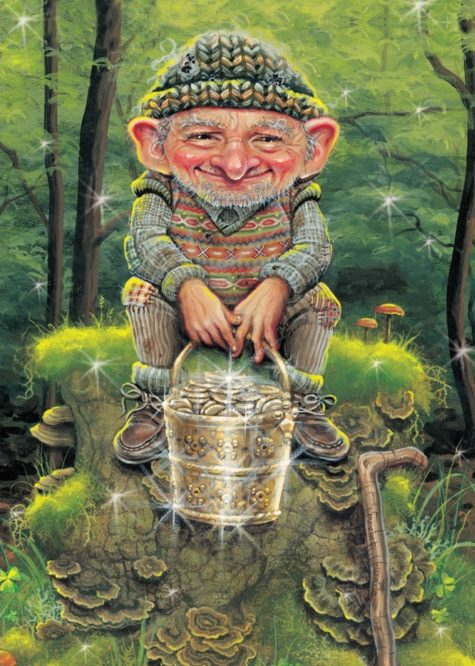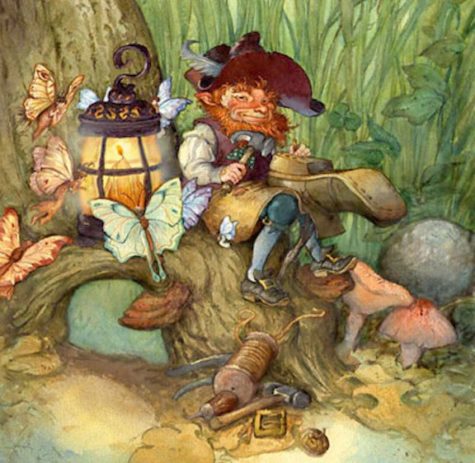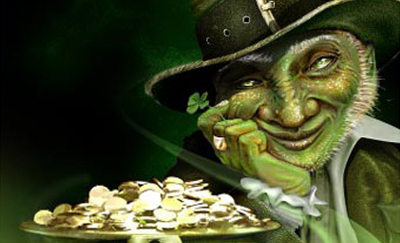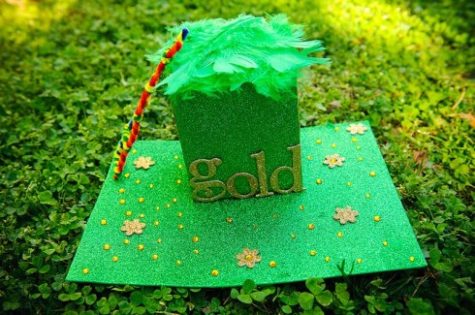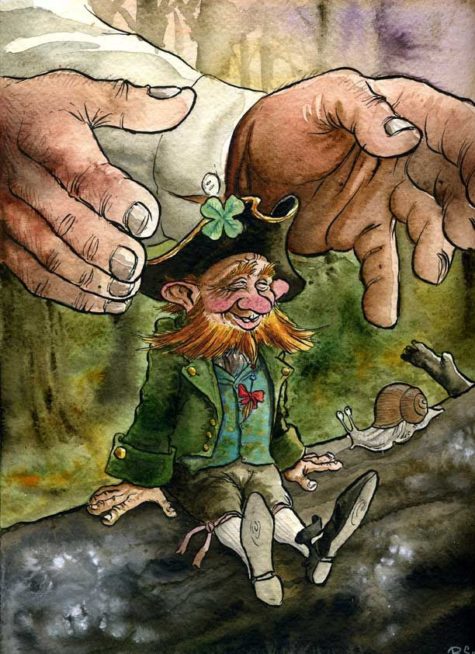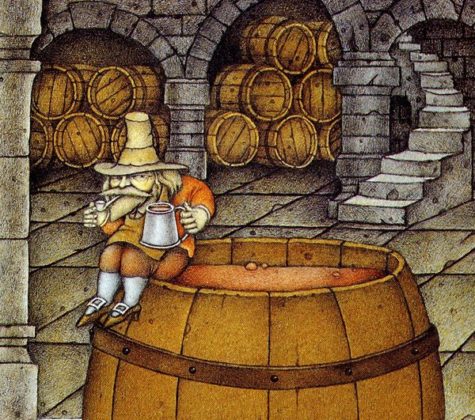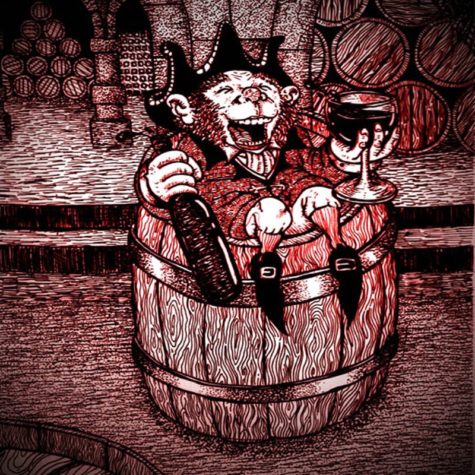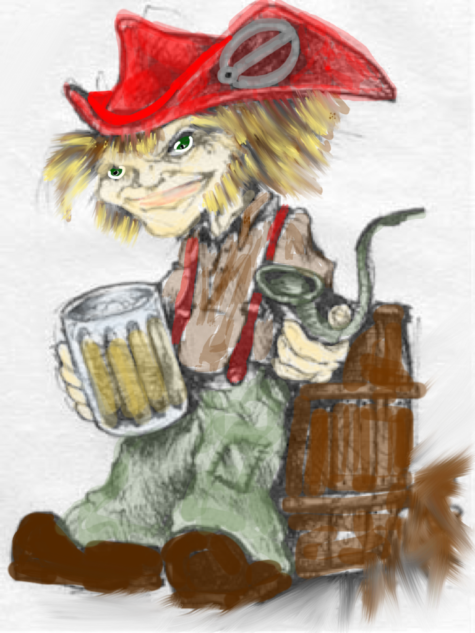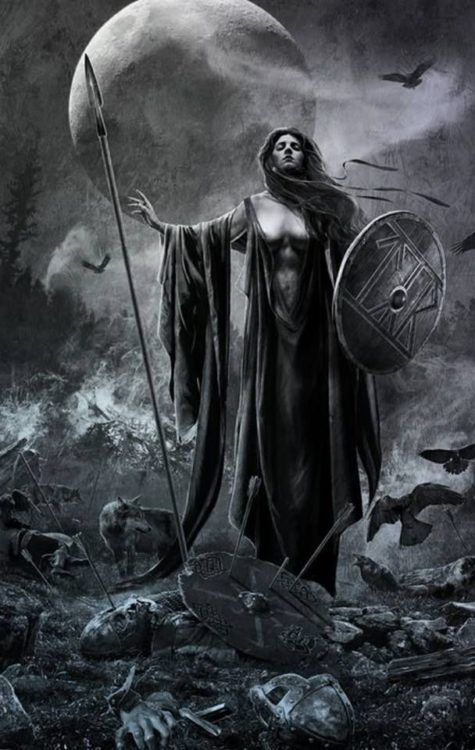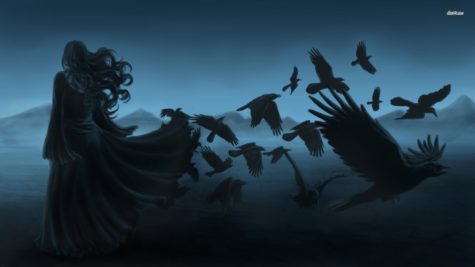Ireland
Below are listed some of the animals denoted by Celtic Shamanism and Druidism along with their spiritual denotation:
Adder, Snake (Nadredd):
The snake has long been associated with wisdom, reincarnation, and cunning. The Poisonous adder of the British Isles has the same reputation. Although there were no snakes in Ireland, the Irish Celts knew about them. The Druids were known in Wales as Nadredd. The Druids also carried an amulet called gloine nathair (Serpent Glass); which was supposed to be formed from the eggs of an adder.
Badger (Breach):
This animal is unyielding in the face of danger and is noted for its tenacity and courage. In the Welsh tale of Pwyll’s courting of Rhiannon, a badger is mentioned as a guide during dreaming. The badger will teach you to fight for your rites and defend your spiritual ideas.
Bat:
Associated with the underworld or Awwyn, as the bats radar guides it through the night avoiding obstacles and barriers, so it can teach you to do the same.
Bear (Arth):
Although the bear was native to the Isles, it is now extinct there. The word Arth, means bear, which is the root word for the name Arthur. The bear was noted for its strength and stamina. It is said to help give you balance in life and the strength to do what is necessary.
Bee (Beach):
The bee is revered as industrious, single minded when performing a task, and fearless when defending its home.
Blackbird (Druid-dhubh, Lon Duhb):
Legends say that the birds of Rhiannan are three blackbirds, which sit and sing in the World Tree of the Otherworlds. Their singing puts the listener into a sleep or a trance which enables him/her to travel to the Otherworld. It was said to impart mystic secrets.
Boar (Bacrie):
Important in the arts and myths of the Celtic people, the boar was known for its cunning and ferocious nature. A famous legendary boar was Orc Triath, which the goddess Brigit owned. In the Arthurian tales of the Mabinogion the boar Twrch Trwyth was a terrible foe to Arthur. The White Boar of Marvan sent inspiration to its master to write music and poetry.
Bull (Tarbh):
A common animal figure in Celtic mythology, the bull symbolizes strength and potency. Certain divination rituals required the sacrifice of a white bull. In the tale of the Tain Bo Cuailgne (Cattle raid of Cooley), two special bulls are coveted by two rulers. The Tar-roo-Ushtey (Water bull) is said to haunt the Isle of Man.
Butterfly:
In many cultures the butterfly is thought to be the souls of the dead and keepers of power. There is said to be no negative energies experienced in any Otherworld area when there is the presence of butterflies. It is said that they will help you to view matters with greater clarity.
Cat (Caoit, Cat):
Many of the Celtic legends picture the cat as a ferocious, evil creature, but that may have been because cats at that time were untamed. In Ireland Finn mac Cumhail was said to have fought a clan of “cat-headed” people. The cat is a strong protector, especially when placed in confrontation.
Cock:
In several Celtic legends the cock chases away ghosts and unwanted spirits by his crowing at dawn. It represents the power of the word to dispel negativity.
Cow (Bo):
Once so important to the Celts it was used as a form of currency or monetary exchange. Ancient Irish lords were known as bo-aire or cow-lord. The cow was sacred to the goddess Brigit. The cow symbolizes contentedness, defending the inner child, and providing for daily needs.
Crane:
At one time the crane was a common animal in the British Isles. One later Celtic tradition, apparently originated after the arrival of Christianity, is that cranes are people who are paying a penance for some wrong doing. The crane is associated with the Cailleach and Manannan Mac Lir, who made his crane bag from its skin. The crane with its colors of black, white, and red, was a moon bird, sacred to the Triple Goddess. Magick, shamanic travel, learning and keeping secrets, reaching deeper mysteries and truths is said to be taught by the crane.
Crow (Badb):
This animal is to be treated with care. Along with the raven, the crow is a symbol of conflict and death, an ill-omen associated with such Goddess as Macha, Badb, and Morrigan. The Irish word for crow is badb, which is also the name of a Celtic war Goddess. Although the crow was ill-omened, it was also considered to be skillful, cunning, and a bringer of knowledge. It teaches you to learn from the past, but not to hold onto it. It is of most value when trickery is in need.
Deer (Abhach) or Stag (Sailetheach):
In its form of the white doe or white stag, the deer was often a messenger and guide from the Otherworld. Following such an animal led the unsuspecting human into contact with supernatural beings. The antlered headdress of Cernunnos is a symbol of the stags stature. The deer represents keen scent, grace, swiftness, and gentleness. These are the ways of reaching our goals without using force.
Dog (Abach, Mada) or Hound (Cu):
Devoted hounds are often mentioned in Celtic myth, such as Bran and Sceolan which belonged to Finn mac Cumhail. Underworld hounds, such as the Welsh Cwn Annwn belonged to Arawn, are always white with red ears. The Underworld Hounds run down and punish the guilty. Dogs represent tracking skills, the ability to scent a trail, and companionship.
Dolphin:
This creature was associated with the sea deities. It deals with dreams and harmony, and recognizing and balancing the rhythms of your body with those of nature.
Dragon (Piastras, payshtha, Horn):
The dragon in Celtic-British mythology has more varieties than the standard legged form; it is sometimes represented as a water serpent or worm-shaped beast. There are many references to serpents or dragons in Celtic myth. On many occasions the Fianna fought huge dragons in lakes. Most cultures consider the dragon a benevolent dweller of caves, lakes, and the inner Earth. It was an ancient symbol of wealth. The dragon symbolizes the power of the Elements, especially that of the Earth, but also of the treasure of the subconscious mind.
Eagle (Lolair):
A bird noted for wisdom and long life in Celtic stories. The eagle represents swiftness, strength, keen sight, and the knowledge of magick. It helps you to see hidden spiritual truths.
Eel (As-chu):
One of many stories in which the eel is mentioned is the story of the swineherds who battled through a variety of shape-shifting forms. In their final forms as eels, the swineherds were swallowed by cows who later gave birth to magickal bulls. Cu Chulainn’s spear Gae-Bolga got its name from the eel. The eel symbolizes adaptability, wisdom, inspiration, and defense.
Fox (Mada Rua):
In Taliesin’s Song of His Origins, the Bard says he assumed the shape of a satirizing fox, a reference to the cunning, slyness, and ability of the fox to make fools out of those who chase it. The ability to watch the motivations and movements of others while remaining unobserved is the skill which we may learn from the fox.
Frog:
In many cultures the frog is a symbol of magick. It can teach you to leap swiftly from one level of consciousness to another, from this world to the Otherworld. The frog can also help you find the courage to accept new ideas, nurture yourself, and find connections between ideas.
Hare or Rabbit (Coinin):
An animal sacred to the Goddess Andraste in particular. Its movements were sometimes used for divination; Boudicia used a hare this way just before her last battle with the Romans. It is associated with transformation, the receiving of hidden teachings, and intuitive messages.
Hawk (Aracos):
Celtic oral tradition lists the oldest animal as the Hawk of Achill. As with other birds, the hawk is a messenger between the Otherworld and this world. However, it is of greater skill and strength than other birds. It symbolizes clear sightedness and longevity of the memory. If you hear a hawk cry during a journey, be alert to upcoming situations that need boldness and decisiveness to keep from being thrown off balance.
Horse (Cab-all, Capall):
A popular animal of the Celts. Sacred to the Goddesses Epona and Rhiannon. The horse was considered to be a faithful guide to the Otherworld. It symbolizes stamina, endurance, and faithfulness.
Lizard:
The lizard symbolizes the shadowy plane of manifestation where events are constantly changing shapes and patterns. If you see a lizard on a journey, be alert to all below the surface activities going on around you.
Lynx:
This creature is considered the keeper of deep secrets and hidden knowledge. It can help with divinatory skills and the development of psychic senses. Sometimes it symbolizes the need to look deeper within yourself to see that which is often hidden.
Magpie:
This bird is said to deal with omens and prophecies, as well as the mysteries of life and death.
Mouse (Luch):
The mouse is often mentioned in Celtic folklore. In a Welsh story with Manawydan and Pryderi, a mouse is portrayed as the shape shifted wife of the magician Llwyd. The mouse represents secrets, cunning, shyness, and the ability to hide in times of danger.
Otter (Balgair):
These animals were considered very magickal by the Celts. Otters were said to appear and help during the voyages of Maelduine, Brendan, and others. The otter is a strong protector who helps with gaining wisdom, finding inner talents, faithfulness, and the ability to recover from any crisis.
Owl (Caillech):
These birds were most often associated with the Crone aspects of the Goddess. The word “cailleach” in the Scottish Gaelic means “owl.” The owl is often a guide to and through the Underworld, a creature of keen sight in darkness, and a silent and swift hunter. It can help unmask those who would deceive you or take advantage of you.
Pig (Muc):
A swine was considered to be the magickal, sacred food of the Tuatha De Dannan and an animal of Manannan mac Lir. In the Mabinogion Pwyll received a gift of pigs from the underworld God, Awrawn. Their later theft by Gwydion caused the death of Pwyll’s son Pryderi. The writings of Merlin say that he spoke with a little pig in visions. Symbolic of the spiritual food necessary to the Druids who were said to be swine herders.
Rat (Francach):
Rats are not mentioned in a favorable light in Celtic folklore, but they have their place. Rats are sly, sometimes aggressive, creatures who can track down whatever they seek, defending themselves ferociously.
Raven (Bran):
Take care when dealing with this bird. An important animal of the Celts. In Ireland the raven was associated with the battlefields and such Goddesses as Morrigu or the later Welsh Morrigan, just as the crow. The bird was connected with Bran the Blessed. In Welsh, bran means, “raven.” Although its reputation is dubious, it is an oracular bird. It often represents the upsets and crisis of life that are necessary for new creation.
Salmon (Brionnfhionn):
A very wise, magickal creature in Celtic lore. A salmon of great knowledge is said to swim in the Well of Segais, eating the mystical hazelnuts that fall into the well. When the Irish hero Finn mac Cumhail burned his thumb on a salmon and then put the thumb in his mouth, he gained shamanic knowledge. The salmon teaches how to get in touch with ancestral knowledge and how to put it to practical use.
Sow (Airc):
The Goddess Cerridwen was known as the White Sow. The sow was considered a very powerful creature in the Underworld. As a creature of Cerridwen, it was associated with the Sacred Cauldron and the granting of inspiration; also a creature of death and rebirth.
Squirrel:
This creature is always preparing for the future; it is said to have shown the druid how to do this in a practical way. Sometimes its appearance heralds changes, even adversities. Plan ahead so that you may always be prepared.
Swan (Eala):
A mystical bird who finds its way into several Celtic stories. Its feathers were often used in the ritual cloak of the Bards. Swans are connected with music and song. Swans also help with the interpretation of dream symbols, transitions, and spiritual evolution.
Turtle:
The turtle is a slow moving, methodical creature, carrying its protection constantly with it. It is said to teach the druid to be grounded, how to stay in tune with Earth energies, the wisdom of flowing with the cycles of life, and to be gentle with the body’s needs.
Unicorn:
This mythical Celtic creature had the body of a white horse, the legs of an antelope, tail of a lion; and a single horn on its head. It is the symbol of supreme magickal power. It teaches that every action is creation, so make every day count.
Wolf:
The wolf is a cunning, intelligent creature, capable of out thinking hunters. It can teach you how to read the signs of nature in everything, how to pass danger invisibly, how to outwit those who would wish you harm, and how to fight when needed.
Wren (Dryw, Dreoilin):
A sacred bird to the Druids specifically, its musical notes were used for divination. As with many other birds, the wren was considered a messenger from the deities.
Source: Father Oak
- Origin: Ireland
- Manifestation: Leprechauns are described as small wizened men wearing a shoemaker’s leather apron.
The stereotype of the Leprechaun involves lucky charms and pots of gold at the end of the rainbow. If captured by a human, they often grant three wishes in exchange for their freedom.
Leprechauns are highly commercially modified spirits; their image used to sell breakfast cereal, beer, and anything even remotely Irish. In recent years, Leprechauns, re-envisioned as “evil Fairies” have evolved into villains of horror movies; however this distorted image has no relation whatsoever to true Leprechauns who may be grouchy but are by no means vicious killers.
True Leprechauns are members of the Fairy folk, a type of sidhe. They are unusual because, in a realm dominated by females, Leprechauns are virtually exclusively male spirits.
The name Leprechaun derives from the Gaelic leigh brog “one shoemaker.” He is a cobbler, the only professional sidhe. While the other sidhe are out dancing and reveling, the Leprechaun is hard at work. He is, however, always seen working on only one shoe rather than a pair, which may be a shamanic reference.
References to shoes, especially one shoe, are often oblique references to shamanism. Ancient shamanic seances were often performed with one shoe on and one shoe off or featured dance steps that mimicked limping.
He works on shoes continually, with time off only for an occasional spree. The Leprechaun is fabulously wealthy: he buries his treasure in pots and is reputedly a skillful but not always nice practical joker. He may be invoked for financial aid.
Like other Irish fairies, Leprechauns may be derived from the Tuatha Dé Danann. Leprechaun-like creatures rarely appear in Irish mythology and only became prominent in later folklore.
- Interesting factoid: Leprechaunism is another name for Donohoe Syndrome, a rare genetic disorder characterized by delayed or diminished growth and facial features perceived as elfin.
According to Yeats, the solitary fairies, like the Leprechaun, wear red jackets, whereas the “trooping fairies” wear green. The Leprechaun’s jacket has seven rows of buttons with seven buttons to each row. On the western coast, he writes, the red jacket is covered by a frieze one, and in Ulster the creature wears a cocked hat, and when he is up to anything unusually mischievous, he leaps on to a wall and spins, balancing himself on the point of the hat with his heels in the air.
According to McAnally:
He is about three feet high, and is dressed in a little red jacket or roundabout, with red breeches buckled at the knee, gray or black stockings, and a hat, cocked in the style of a century ago, over a little, old, withered face. Round his neck is an Elizabethan ruff, and frills of lace are at his wrists. On the wild west coast, where the Atlantic winds bring almost constant rains, he dispenses with ruff and frills and wears a frieze overcoat over his pretty red suit, so that, unless on the lookout for the cocked hat, ye might pass a Leprechawn on the road and never know it’s himself that’s in it at all.
This dress could vary by region, however. In McAnally’s account there were differences between Leprechauns or Logherymans from different regions:
- The Northern Leprechaun or Logheryman wore a “military red coat and white breeches, with a broad-brimmed, high, pointed hat, on which he would sometimes stand upside down”.
- The Lurigadawne of Tipperary wore an “antique slashed jacket of red, with peaks all round and a jockey cap, also sporting a sword, which he uses as a magic wand”.
- The Luricawne of Kerry was a “fat, pursy little fellow whose jolly round face rivals in redness the cut-a-way jacket he wears, that always has seven rows of seven buttons in each row”.
- The Cluricawne of Monaghan wore “a swallow-tailed evening coat of red with green vest, white breeches, black stockings,” shiny shoes, and a “long cone hat without a brim,” sometimes used as a weapon.
In a poem entitled The Lepracaun; or, Fairy Shoemaker, 18th century Irish poet William Allingham describes the appearance of the Leprechaun as:
…A wrinkled, wizen’d, and bearded Elf,
Spectacles stuck on his pointed nose,
Silver buckles to his hose,
Leather apron — shoe in his lap…
The modern image of the Leprechaun sitting on a toadstool, having a red beard and green hat, etc. is clearly more modern invention or borrowed from other strands of European folklore. Films, television cartoons and advertising have popularized a specific image of Leprechauns which bears little resemblance to anything found in the cycles of Irish folklore. It can be considered that the popularized image of a Leprechaun is little more than a series of stereotypes based on derogatory 19th-century caricatures.
Catching A Leprechaun
Leprechaun traps are crafts made, typically in elementary school or by families with small children, to celebrate Saint Patrick’s Day. Leprechaun trapping can be compared to leaving cookies out for Santa Claus on Christmas Eve. The traps are set up the night before St. Patrick’s Day, and children awaken to discover signs that leprechauns have visited the trap.
The traps are typically made out of common household items that can be easily found or purchased. The traps are typically green and gold and feature the stereotypical leprechaun items: gold coins, rainbows, top hat and four leaf clover. A simple google search will reveal literally hundreds of DIY Leprechaun trap ideas.
According to the tradition, one must believe leprechauns are real to trap one. It is also believed that leprechauns love gold and trickery, and may steal or hide items unless captured, pleased, or scared away. Once trapped, Leprechauns may grant three wishes, and in many of the folklore stories, those lucky enough to catch one are tricked, and made foolish wishes which they lived to regret.
In most cases, children return to the trap with signs of a leprechaun visiting rather than a leprechaun itself. There might possibly be chocolate coins, and small treasures left in their bottom drawers.
If you Catch A Leprechaun
If you get lucky and manage to catch a leprechaun you need to be smarter than him or else you will be easily tricked which can have damaging results, never take your eye off him or he will vanish.
A captured leprechaun will grant you three wishes or a gold coin to bribe his way to freedom but this is when things can go terrible wrong if the wrong decisions are made.
- Use your 3 wishes wisely
Many of an Irish man who thought he could out smart an Irish leprechaun had selected the three wishes and would either go insane trying to think of what to wish for or their wishes would back fire with something bad happening.
One common story was of Seamus in County Mayo who wished to be the richest man on a tropical island. However, when his wish came true he suddenly realized that there were no shops or pubs on the island to spend his money or even people to talk with. Unfortunately Seamus became bored after a few hours on the Island and had to waste his third wish to return to Ireland. This could be how the phrase “luck of the Irish” originated from.
One of the biggest tips an Irish person can give anyone is to never listen to what the Irish leprechauns says, no matter what. The leprechauns are great mind players and will say anything to confuse you. You’ll make the wrong wishes, although he is smart he can be fooled.
- Never trust an Irish Leprechaun
Irish leprechauns are devious little creatures and will do anything to escape from man so they should never be trusted. Some say angry leprechauns are more common than a friendly one but this is very untrue as Irish leprechauns are very friendly but tend to dislike humans who always seem to chase them for wishes and pots of gold.
If you ever spot a leprechaun you may be better off to pass him by without taking notice, you can end up in more trouble than its worth if decide to chase them as the people of Ireland only know to well. Unfortunately with cities in Ireland expanding the poor wee leprechauns are being driven further underground away from man, taking their rainbows with them.
Sources:
- Encyclopedia of Spirits
- Wikipedia
- You’re Irish
Clurichauns may or may not be the same type of spirit as Leprechauns. If not, they are closely related. Like Leprechauns, Clurichans are virtually exclusively male. The Clurichaun may be the nocturnal form of the Leprechaun, out on a bender after a hard day’s work. Alternatively, some perceive Clurichauns to be Leprechauns lacking a work ethic.
Unlike hardworking, wealth-accumulating Leprechauns, Clurichauns spend all their time drinking. They are virtually always soused although they allegedly retain their good manners, unlike the reputedly sometimes surly Leprechaun. Clurichauns come out at night to drink, party and play pranks on people.
The folklorist Nicholas O’Kearney described the Clurichaun in 1855 as follows:
“ The Clobhair-ceann was another being of the same class: he was a jolly, red-faced, drunken little fellow, and was ever found in the cellars of the debauchee, Bacchus-like, astride of the wine-butt with a brimful tankard in hand, drinking and singing away merrily. Any wine cellar known to be haunted by this sprite was doomed to bring its owner to speedy ruin.”
Katharine Briggs stated that he was “a kind of buttery spirit, feasting himself in the cellars of drunkards or scaring dishonest servants who steal the wine.”
He is also described as a trickster and practical joker, and a disturber of order and quietness in a household, making noise day and night. Despite his often troublesome nature, the Clurichaun takes special care of the family to whom he has attached himself, endeavoring to protect their property and lives provided he is not interfered with. This dual nature makes him similar to the domestic hobgoblin.
Besides his love of drinking, the Clurichaun also enjoys pipe smoking, and the small disposable clay pipes known as “fairy pipes” that are often found while digging or plowing are said to belong to him. He also knows the secret of making beer from heather.
In olden days, many were butter thieves. They still like to raid the pantry.
The only occupation for which the Clurichaun displays enthusiasm is as guardian of wine and liquor cellars. The Clurichaun will protect your cellar from thieves and can allegedly prevent wine from spoiling and bottles from breaking or leaking. Simply request his presence and explicitly leave him a sample of whatever you have in stock. Leave him offerings on a regular basis lest he decide to begin serving himself. (He may anyway.)
The Clurichaun is sometimes portrayed carrying a jug of ale or wearing a leather apron with hammer in hand, whistling as he works. He also carries a magical purse (or sometimes a pewter beggars cup) with varying properties. It may contain a shilling (known as the “lucky shilling” or spre na skillenagh) that always returns to the purse no matter how often it is spent, or it may always be full of money, and for this reason mortals will often try to capture the Clurichaun . Even if he is caught he has the power to vanish if he can make his captor look away even for an instant.
He frequently carries two such purses, one containing the magic shilling and the other containing a normal copper coin, and if captured he will present the latter before vanishing. Like the Leprechaun he is sometimes said to have knowledge of hidden treasure and can be forced to reveal its location. In such instances one of his tricks is to create the illusion of multiple treasure markers so that the seeker will not know its exact whereabouts.
Clurichaun Stories
In the folktale “The Haunted Cellar”, recorded by Thomas Crofton Croker in 1825, a Clurichaun named Naggeneen haunts the wine cellar of an Irish lord, drinking everything in sight and playing frightening pranks on the servants.
He is described as a little man measuring six inches in height with a face like a withered apple. He has twinkling eyes and a nose that is red and purple from heavy drinking. He wears a red nightcap, a short leather apron, light blue stockings, and shoes with large silver buckles. When he is discovered by the master of the house, Naggeneen talks him out of moving elsewhere by implying that he would simply move with him.
Other descriptions have him wearing red like other solitary fairies.
In another tale, “Master and Man”, a young man named Billy Mac Daniel is on his way home one winter night when he is offered a glass of liquor by a Clurichaun to warm himself. He takes the drink but when he refuses to pay for it he is compelled by the Clurichaun to serve him for seven years and a day. Billy, however, is eventually able to break his servitude by invoking the blessing of God.
In this story, the Clurichaun is able to pass through keyholes to invade homes and wine cellars and can transform bog rushes into horses to be used as mounts. Clurichauns can also fly through the air on rushes similar to witches and their broomsticks.
Sources:
- Encyclopedia of Spirits
- Wikipedia
- Also known as: Morrigu, Morrigna
- Origin: Ireland
- Birds: Corvids: Crow, Raven, Roo
- Creatures: The Morrigan owns a herd of enchanted magickal cattle
- Color: Red
- Day: Samhain
The Morrigan is a Celtic goddess of battle, strife, and fertility. Her name translates as either “Great Queen” or “Phantom Queen,” and both epithets are entirely appropriate for her. The Morrigan appears as both a single goddess and a trio of goddesses.
The Morrigan is a powerful spirit of birth, death, sex, destruction, and fertility. She is among the goddesses associated with Ireland’s well-being and sovereignty. Her name is variously translated as:
- Great Queen
- Sea Queen
- Phantom Queen
- Terrifying Queen
She is an oracular, prophetic spirit who can reveal the future and anyone’s destiny – that is, if she feels like it. The Morrigan is a headstrong, passionate goddess who does as she pleases. She is among those goddesses serving as Washers at the Ford
The Morrigan may be one spirit, a triple goddess, or three manifestations in one. The Morrigan may name a triad of distinct goddesses – usually Badbh, Nemain, and Morrigan, but sometimes Macha is included.
The Morrigan is most famous as a war goddess. She may instigate battle or meddle with it. The concept of minding her own business does not exist: Battle is her business. Anything that captures her interest is her business. The Morrigan is also renowned for giving sound battle advice. She advised the Dagda on how to deal with the fumorians.
The Morrigan determines war’s outcome, bestowing victory to whichever army or warrior she favors, but she has a reputation for being capricious. Her favors can never be taken for granted. Her frenzied war fury unnerves armies. Her shriek is deadly.
The Morrigan frequently appears in the ornithological guise of a hooded crow. She is one of the Tuatha Dé Danann (“Tribe of the goddess Danu” or the land of the Faries) and she helped defeat the Firbolg at the First Battle of Mag Tuireadh and the Fomorians at the Second Battle of Mag Tuireadh. She is often read about in books that are about the Fae.
Her many manifestations include, but are not limited to:
- A beautiful woman
- A hag.
- A crow
- A deer (doe or stag)
- A white heifer with red ears and no horns
- A black eel long enough to coil three times around the legs of Cu Chulain, a great man.
She appeared to the hero Cu Chulainn (son of the god Lugh) and offered her love to him. When he failed to recognize her and rejected her, she told him that she would hinder him when he was in battle. When Cu Chulainn was eventually killed, she settled on his shoulder in the form of a crow. Cu’s misfortune was that he never recognized the feminine power of sovereignty that she offered to him.
She appeared to him on at least four occasions and each time he failed to recognize her.
- When she appeared to him and declared her love for him.
- After he had wounded her, she appeared to him as an old hag and he offered his blessings to her, which caused her to be healed.
- On his way to his final battle, he saw the Washer at the Ford, who declared that she was washing the clothes and arms of Cu Chulainn, who would soon be dead.
- When he was forced by three hags (the Morrigan in her triple aspect) to break a taboo of eating dog flesh.
More than just a battle goddess, the Morigan is also a goddess of life, birth, and sex. She is sometimes identified as a mermaid. On Samhain, the beginning of the Celtic dark half of the year, the Morrigan stands astride a river with one foot on either bank to engage in the Great Rite – sacred, transformative, ritual sex – with the Dagda (Ireland’s All-Father).
Sources:
- Redbubble
- The Encyclopedia of Spirits
